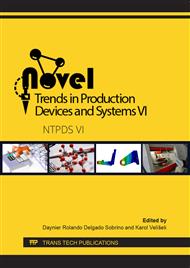p.11
p.19
p.28
p.36
p.44
p.52
p.62
p.70
p.78
The Selection of Materials for the Auto-Body Deformation Zones
Abstract:
Nowadays, it is important to select the proper material for parts of the car-body’s deformation zones in terms of passenger safety. Due to wide range of high-strength steels on the market, the article presents the way of selecting the material by determining the deformation work and the stiffness constant, both measured by the stretch-bending test. The procedure was verified on a high-strength micro-alloyed steel HSLA, high-strength multi-phase steels DP 600 and TRIP, and an austenitic stainless steel AISI 304. The results indicate the austenitic steel is better to use in the deformation zones for the frontal impact, while multi-phase steels are more suitable for deformation zones at the lateral impact. The regression model describing the dependence of the deformation work measured at the stretch-bending test and the deformation work measured at uniaxial tensile test was defined as well. The model allows predicting the deformation work at stretch-bending test based on the mechanical properties measured by the tensile test.
Info:
Periodical:
Pages:
44-51
Citation:
Online since:
May 2020
Authors:
Price:
Сopyright:
© 2020 Trans Tech Publications Ltd. All Rights Reserved
Share:
Citation:


